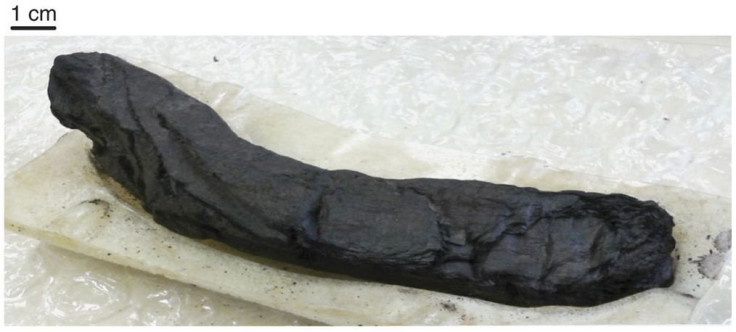X-Rays Restore Ancient Scrolls Buried By Mount Vesuvius Eruption 2,000 Years Ago

Scientists have used a sophisticated form of X-ray technology to read parts of ancient papyrus scrolls that were turned into charcoal after they were buried in an eruption of Mount Vesuvius in Italy almost 2,000 years ago.
While some of the 1,800 scrolls that were unearthed in the 1750s have been deciphered, many have remained a mystery as they were so badly damaged that unrolling the ancient documents would have destroyed them. According to scientists, the new method, called X-ray Phase Contrast Tomography, enabled them to decode some of the writing while leaving the scroll rolled up.
“They are extremely fragile because they are, more or less, only pieces of charcoal,” Emmanuel Brun of the European Synchrotron Radiation Facility in Grenoble and Ludwig Maximilians University in Munich, who helped lead the study, told Reuters.
The charred scrolls were believed to be part of a library, called the Villa of the Papyri, in the ancient city of Herculaneum, which was buried -- along with its sister city Pompeii -- by the historic eruption in 79 A.D. The study was published in the journal Nature Communications.
"Until now, specialists have been unable to view the carbon-based ink of these papyri, even when they could penetrate the different layers of their spiral structure. Here for the first time, we show that X-ray phase-contrast tomography can reveal various letters hidden inside the precious papyri without unrolling them," scientists said in the study.
According to Vito Mocella, a scientist at the Institute of Microelectronics and Microsystems (CNR) in Naples, Italy, who led the study, the new X-ray technology was used on one of the intact scrolls. Further analysis of the scroll revealed that the writing was in ancient Greek, and that the text could have been written by 1 BC philosopher Philodemus, who died about a century before the volcanic eruption.
Mocella also said that the method used to read the scroll will be replicated to decipher the remaining scrolls that are expected to contain lost ancient works.
“It's a philosophical library of Epicurean texts from a time when this philosophy influenced the most important classical Latin authors, such as Virgil, Horace and Cicero,” Juergen Hammerstaedt, a professor of Greek and Latin at the University of Cologne, Germany, told The Associated Press. “There needs to be much work before one can virtually unroll carbonized papyrus because one will have to develop a digital method that will allow us to follow the layers.”
© Copyright IBTimes 2025. All rights reserved.






















